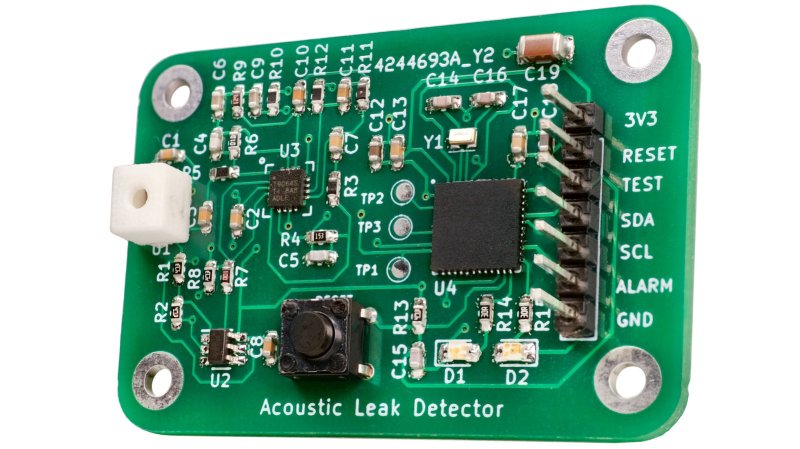Water leaks can be pernicious things. Even just a few drips per minute happening undetected inside a wall can cause major damage if left unrepaired for long enough. AquaPing is a new device that hopes to detect difficult-to-find water leaks with the aid of acoustic methods.
The AquaPing is a so-called “stand-off” sensor that is intended to detect leaks at a distance, even if they are inside a wall. No contact is needed with the plumbing itself. Instead, the device detects the broadband high-frequency noise created when water leaks from a pipe under pressure.
It’s a method that’s best suited to leaks from cracks or loose fittings. These generate a characteristic hiss that can be picked up with signal analysis even if the noise itself is obscured to human perception by other noises in the area. However, leaks like a hole in a gutter or a dripping rusted-out water tank are best found by other methods, as they don’t create this same signature noise.
The device will soon be launched on CrowdSupply as a purchasable product, however the project is fully open source for those eager to dive in themselves. We’ve featured some other really creative leak detectors before, too! Video after the break.

















Now all that’s needed is for underground pipes. Those are a pain.
I could use one of these!
Can we buy Thames Water a million of these…?
There are commercial modules routinely used to check the pipes of entire cities for leaks (at least here in Europe), but these modules are probably $$$ so if you have (a lot of) pipe running on your property this device might be handy. The real magic must be in the signal processing. Uh and maybe this thing should at least get some coating to make it somewhat water/moisture-resistant?
Sensing the chlorine in water might be a start.
No chlorine in the water here
Maybe this is one for the patent trolls
You know the term “dribbling” in the game basketball? Neighborhood kids are always playing on the street and when I hear that my ears perk up. Wonder if this would throw a false positive.
Could this be adapted to predict earthquakes, assuming there are prior creaking sounds.
There is a commercial product along these lines, but it’s aimed at defecting airline leaks through ambient noise. I’ve seen one in use within a factory environment, several years back. A fairly expensive bit of kit if I recall.
Hi Paul, I am the inventor of the AquaPing. If the sensor is properly trained, it won’t misinterpret the sound of basketballs, which will likely be interpreted as environmental noise. Sensitivity to leaks will be compromised by the dribbling noise, but the sensor should be smart enough to ignore it and not trigger a false alarm. This is discussed in detail in the user manual (see link at Crowd Supply).
This is really a really cool design!
I’m sure you’ve tried it but would attaching the microphone to the pipe or at least placing it next to it lead to good detection?
My first thought was to mount this on/near the supply line and that the acoustics you’re detecting would hopefully propagate well through the water in the pipe itself. If it worked installing after the meter would provide coverage for the entire system. I’m not sure if the meter itself or other parts of the system would cause false positives though.
Dan, there are products on the market that attach directly on or inside the plumbing that attempt to make sense of the water acoustics. One version is marketed under the name Phyn. Yes, I have done some experimentation with this and discovered that plastic PVC pipe will dramatically attenuate propagating acoustics in just a few feet. Metal pipe is much better, but not everybody uses it. To make this approach work, the sensor almost certainly has to be inside the pipe/liquid. Messy, complicated, power hungry, and expensive. I decided to develop stand-off detection because it can cover a wide area like a smoke detector and be produced for relatively low cost.
Update: The Crowd Supply campaign has successfully funded and a production run has completed. Units are being shipped to backers in 17 US States and 7 countries.